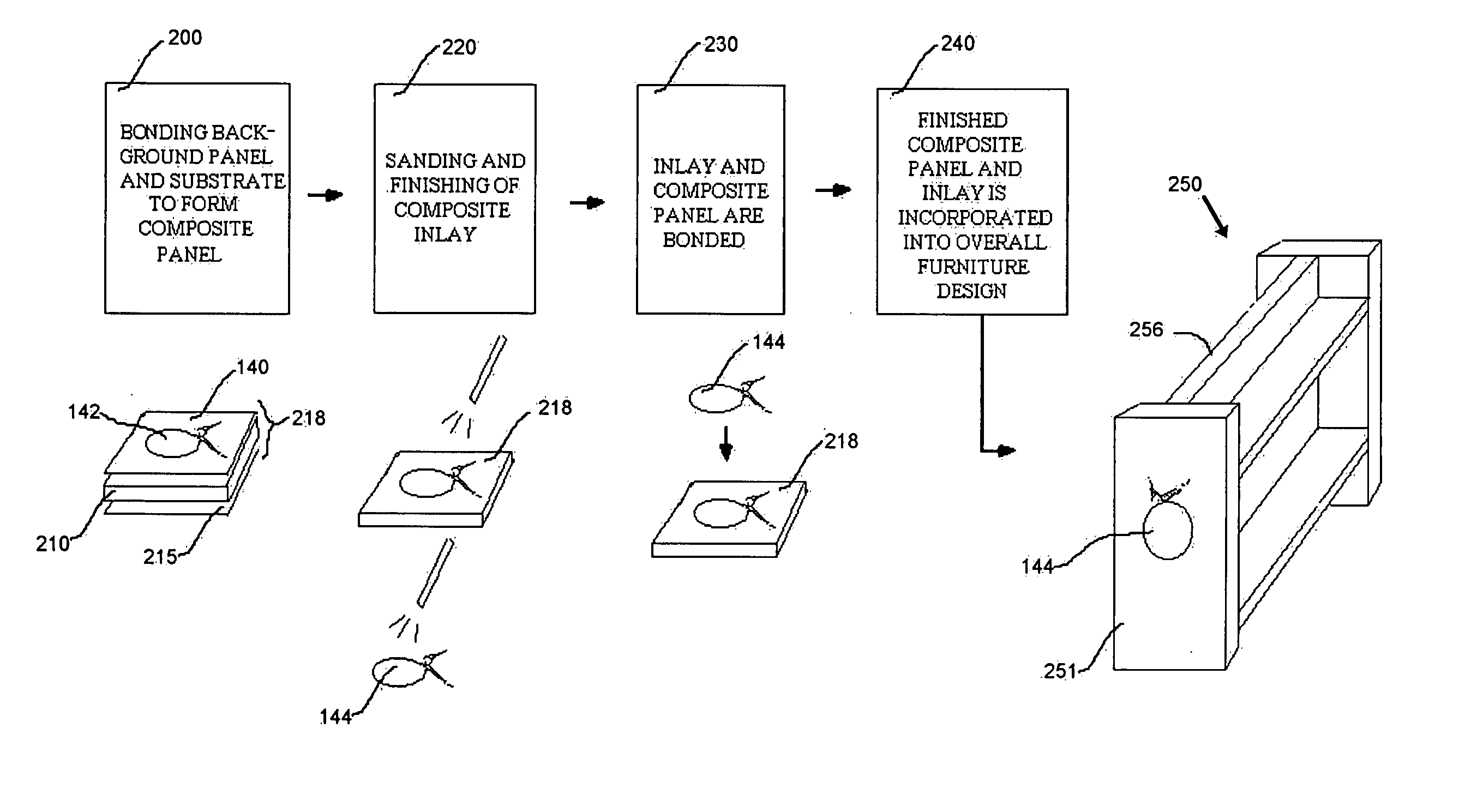System for manufacturing an inlay panel using a laser
- Summary
- Abstract
- Description
- Claims
- Application Information
AI Technical Summary
Benefits of technology
Problems solved by technology
Method used
Image
Examples
Embodiment Construction
[0060]FIG. 1 is a simplified function block and schematic representation that illustrates a laser cutting process for an inlay in accordance with the principles of the invention. As shown in this figure, there is first provided an art master 100 that is provided by a designer (not shown). It is assumed that at this stage of commencement of manufacture the designer has already specified the greater context for the ultimate design of the panel within the furniture or decorative object (whether it be signage, shelf panel, door, etc.). As will be seen in connection with FIG. 2, the article to be manufactured by this illustrative process, is a shelf unit. In addition, this disclosure of a specific illustrative embodiment of the invention will focus on the cutting of a wood veneer, illustratively on a medium density fiberboard (“MDF”) core as the frame panel, and high pressure plastic laminate (“HPPL”) as the inlay element panel.
[0061] Art master 100 may be a hand or mechanically drawn r...
PUM
 Login to View More
Login to View More Abstract
Description
Claims
Application Information
 Login to View More
Login to View More - R&D
- Intellectual Property
- Life Sciences
- Materials
- Tech Scout
- Unparalleled Data Quality
- Higher Quality Content
- 60% Fewer Hallucinations
Browse by: Latest US Patents, China's latest patents, Technical Efficacy Thesaurus, Application Domain, Technology Topic, Popular Technical Reports.
© 2025 PatSnap. All rights reserved.Legal|Privacy policy|Modern Slavery Act Transparency Statement|Sitemap|About US| Contact US: help@patsnap.com



